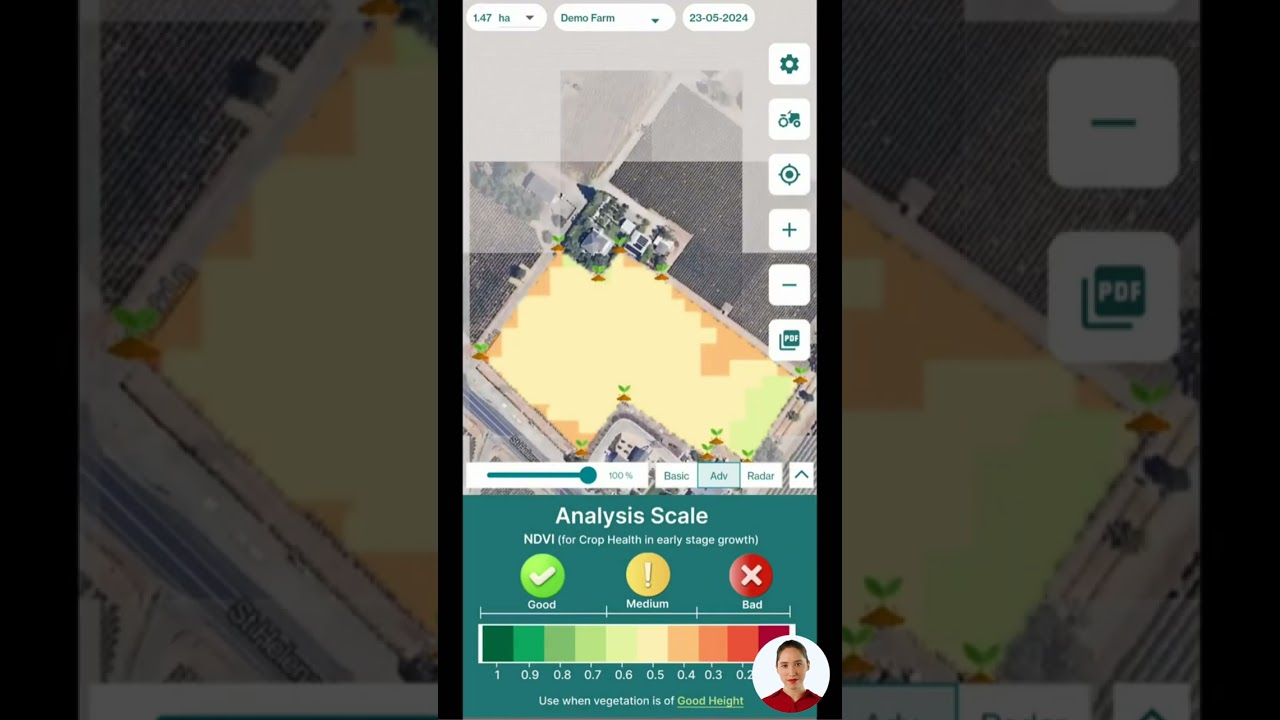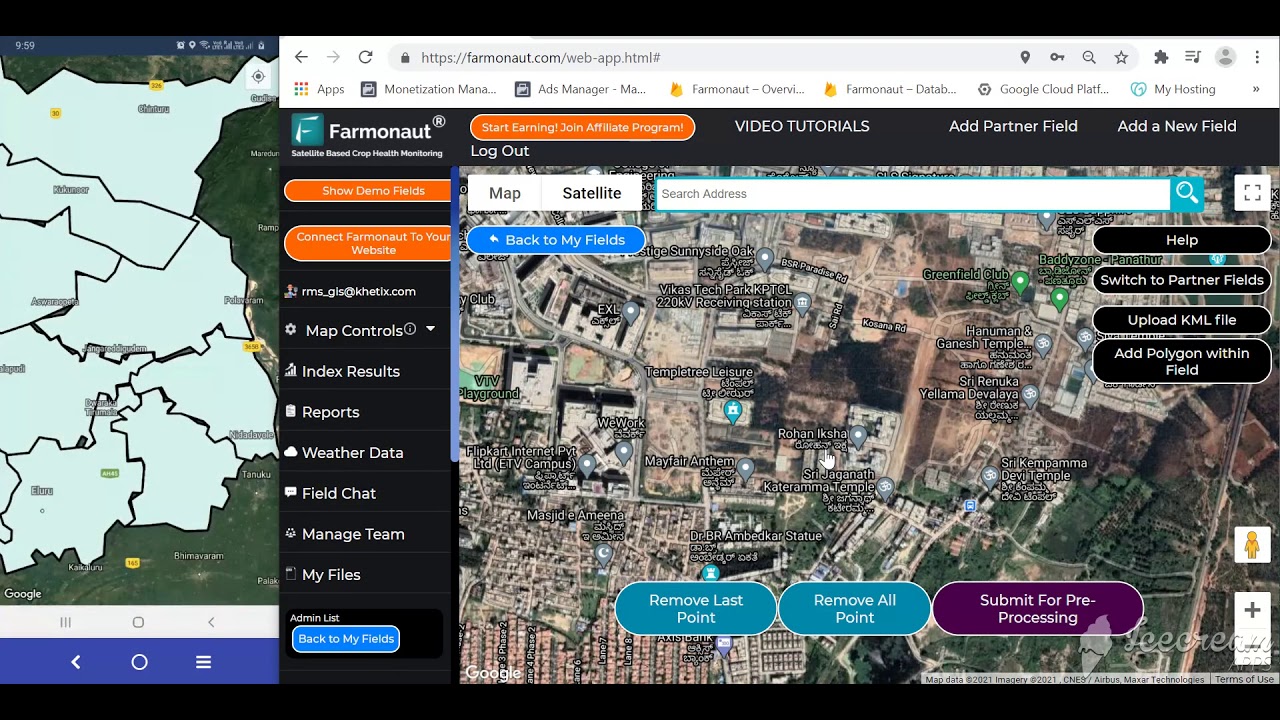Lemon Tree Black Spots: 7 Effective Treatment Tips
Lemon trees are a highly valuable asset in agriculture, providing both economic and nutritional benefits. With their juicy citrus fruits and aromatic leaves, healthy lemon orchards are a cornerstone of fruit production worldwide. However, the presence of black spots on lemon tree leaves—and sometimes fruits—can significantly impact the health and productivity of your trees. Understanding the causes, symptoms, and management strategies for these spots is essential for maintaining healthy and thriving lemon trees.
In this comprehensive guide, we’ll share everything you need to know about identifying, preventing, and treating black spots on lemon trees. You’ll learn the main disease culprits—like fungi and bacteria—the role of insects, and the best practices for management and long-term control. If you’re facing black spots on lemon tree leaves, this resource will help safeguard your orchards and ensure robust, high-quality fruit production.
Table of Contents
- Common Causes of Black Spots on Lemon Trees
- Symptoms and Identification of Black Spots
- Lemon Tree Black Spots – Causes, Symptoms, and Treatment Strategies Table
- 7 Effective Treatment Tips for Lemon Tree Black Spots
- Preventive Measures for Black Spots on Lemon Trees
- How Technology (Farmonaut) Helps in Citrus Health Monitoring
- Frequently Asked Questions
- Conclusion
Common Causes of Black Spots on Lemon Trees
Understanding the common causes of black spots on lemon tree leaves is the first step towards effective management. Several diseases, pests, and environmental factors can lead to lesions, stains, or mold-like patches. Here’s a detailed look at the most important reasons:
1. Citrus Black Spot (CBS) Caused by Phyllosticta citricarpa
Citrus Black Spot is a fungal disease primarily affecting citrus plants, especially in subtropical climates. Symptoms include round, dark, sunken lesions with gray centers and red or brown margins on leaves and fruits. It can cause early fruit drop and severely reduce both crop yield and quality. Learn more.
- Caused by: Phyllosticta citricarpa (fungus)
- Affects: Primarily lemons, oranges, other citrus
- Impact: Quantity and quality loss, premature fruit drop
2. Citrus Melanose Fungal Disease
Citrus Melanose is another fungal disease that commonly affects grapefruit and lemons, particularly on trees older than ten years. The fungus reproduces in dead wood, leading to scabbed rinds and rough spots, especially on developing fruit. While it doesn’t lower fruit quality inside, the appearance is unsightly. Removing dead branches via pruning is recommended. Learn more.
- Caused by: Diaporthe citri (fungus)
- Symptoms: Scabbed, cracked, roughened fruit skin
- Affects: Mainly older trees (10+ years)
3. Sooty Mold on Citrus Trees
Sooty mold appears as black, dust-like stains covering parts of the plant—including leaves, fruits, and stalks. This fungal infection does not attack plant tissues directly; instead, it grows on honeydew: a sweet, sticky excretion from sap-sucking insects (aphids, whiteflies, mealybugs, and scales). Sooty mold reduces sunlight penetration to the leaf, affecting growth, photosynthesis, and overall health. Learn more.
- Caused by: Several fungi feeding on honeydew
- Symptoms: Black, soot-like stains over leaves & fruit
- Indirectly caused by: Pest infestations
4. Bacterial Blast (Pseudomonas syringae)
Bacterial Blast is a bacterial disease that causes rapid blackening and necrosis. You’ll see distinct black lesions on leaves, which may girdle and kill tissue, leading to withering and leaf drop. It is most damaging on the wind-exposed side of the tree. Learn more.
- Caused by: Pseudomonas syringae (bacterium)
- Symptoms: Mahogany, black scabs at leaf axils, severe leaf drop
5. Pest Infestations and Associated Issues
Pests such as aphids, whiteflies, mealybugs, and scale insects indirectly lead to black spots through two main mechanisms: they excrete honeydew, which feeds sooty mold, and they create entry points for fungal or bacterial infections. Their presence is a key driver of leaf blemishes and poor citrus health. Learn more.
- Insects Involved: Aphids, mealybugs, scale, whiteflies
- Symptoms: Sticky leaves, visible insects, deformed growth, black stains
- Impacts: Secondary infections, nutrient loss
6. Environmental Stress and Nutritional Deficiencies
While less common, environmental stress (overwatering, underwatering, poor soils) and some nutrient deficiencies may create conditions where black spots can appear or the tree can be more susceptible to pathogens and pests.
- Causes: High humidity, waterlogged soils, poor air circulation, lack of micronutrients like zinc, manganese
- Symptoms: General decline, chlorosis, leaf blemishes
Symptoms and Identification of Black Spots on Lemon Tree Leaves
The successful management of lemon tree diseases starts with knowing what to look for. Use the characteristics below to distinguish the main diseases and pest problems:
Citrus Black Spot (CBS)
- Lesions: Round, sunken, black with gray centers and red/brown margins
- Location: Fruits, leaves (old and young), stems
- Additional: Early fruit drop, rough fruit surface, necrotic spots
Citrus Melanose
- Lesions: Tiny, raised, scab-like brown spots (grouped or linear), cracked/error-texture skin
- Affected Plant Parts: Fruit, young twigs, mature and aging leaves
Sooty Mold
- Stains: Black soot-like layer covering upper leaf surface, fruit, and branches
- Trigger: Sticky honeydew, presence of sap-sucking insects
- Effect: Reduces sunlight penetration, lowers vigor and growth
Bacterial Blast
- Blight: Sudden, spreading black depression at leaf base/axil, rapid wilt/death of shoot
- Mark: Mahogany/brown scab, prominent on windward tree side
Insect Damage
- Debris: Visible pests, honeydew excretion on leaves/fruits
- Secondary: General decline, yellowing leaves, black mold patches
Environmental and Soil Issues
- Symptoms: Irregular leaf spots, yellowing, stunted growth, sometimes root rot
- Relation: Exacerbates severity of main diseases, may mask true cause
Tip: Early identification of black spots on lemon tree leaves before widespread infection can reduce the impact and simplify treatment.
Lemon Tree Black Spots – Causes, Symptoms, and Treatment Strategies Table
| Cause | Estimated Frequency (% of cases) | Key Symptoms | Recommended Treatment | Expected Recovery Time |
|---|---|---|---|---|
| Citrus Black Spot (Fungal infection by Phyllosticta citricarpa) |
40% | Sunken, dark circular spots with gray centers and red/brown margins, premature fruit drop | Apply copper-based fungicides every 2-3 weeks, remove affected fruit/leaves, improve air flow | 2-4 weeks |
| Citrus Melanose (Fungal infection) |
18% | Raised, scabbed rinds on fruit; lesions on older leaves and twigs | Prune dead wood, use fungicides, avoid overhead irrigation | 3-5 weeks |
| Sooty Mold (Fungal growth on honeydew) |
17% | Black, powdery stains covering leaves, fruits, and branches; sticky texture | Control sap-sucking insects, wash leaves, apply neem oil, maintain orchard hygiene | 2-3 weeks |
| Bacterial Blast (Pseudomonas syringae) |
12% | Black lesions at leaf axils; mahogany scabs, rapid leaf drop, shoot wilting | Spray copper-based bactericides before rainy/windy weather, remove infected branches | 3-4 weeks |
| Pest Infestations (Aphids, Whiteflies, Mealybugs) |
10% | Sticky leaves, presence of pests, associated sooty mold, leaf curling | Use natural predators (ladybugs), apply insecticidal soap/neem oil, monitor regularly | 2-4 weeks (depends on severity) |
| Environmental/Nutrient Deficiency | 3% | General leaf yellowing, weak growth, occasional dark/irregular spots | Correct watering, test soil, apply balanced micronutrient fertilizer | 4-6 weeks |
7 Effective Treatment Tips for Black Spots on Lemon Trees
Once the causes and symptoms are identified, the following management and control tips provide a robust approach to restoring and maintaining healthy lemon trees and preventing further spread of diseases and spots.
1. Cultural Practices for Disease Management
Good orchard hygiene and care can significantly reduce the risk and impact of fungal, bacterial, and pest-related black spots on lemon tree leaves.
- Pruning Lemon Trees for Better Health:
Regularly prune dead or diseased branches to remove sources of inoculum. This improves air circulation and prevents fungal spore spread. - Sanitation:
Remove and dispose of fallen leaves, fruits, and pruned debris promptly to prevent reinfection. Clean up under trees regularly. - Irrigation Practices:
Avoid overhead irrigation, which can splash spores onto healthy tissue. Water at the base. - Spacing:
Ensure trees are appropriately spaced to reduce humidity and allow sunlight penetration. - Sterilization:
Disinfect pruning tools with a chlorine solution between trees.
2. Chemical Controls: Fungicide and Bactericide Use
For severe or persistent lemon tree diseases, well-timed chemical applications are recommended.
- Fungicides (How to Treat Citrus Black Spot): Use copper-based fungicides to treat citrus black spot and melanose. Apply before rainfall or wet weather and repeat every 2–3 weeks during the disease period.
- Bactericides (Preventing Bacterial Blast in Lemons): Spray copper-based bactericide as a preventive measure, especially prior to forecasted winds/rain.
- Insecticides: For heavy pest infestations, use insecticidal soap, horticultural oil, or specific insecticides per local extension guidance.
- Warning: Follow all safety instructions and recommended application rates to avoid damage or chemical buildup.
Related Resource: For a complete guide on fungicides and leaf disease control, see Farmonaut’s lemon pest and disease management guide.
3. Biological Controls and Natural Remedies
- Natural Predators (Managing Aphids on Lemon Trees): Encourage beneficial insects like ladybugs and lacewings, which limit aphid and whitefly populations—reducing honeydew and sooty mold.
- Neem Oil and Horticultural Oils: Apply neem oil as a safe, eco-friendly solution to control both sap-sucking pests and fungal/bacterial pathogens. Repeat weekly during active infestations. Wash excessively sooty leaves with soapy water and rinse well.
- Companion Planting: Grow flowering plants to attract natural enemies to the orchard.
4. Regular Monitoring and Early Detection
Frequent inspection is essential for minimizing disease impact:
- Monitoring: Walk through your orchard every 7–10 days, checking for new black spots, insects, or wilting tissue.
- Record Keeping: Note presence of symptoms, treatments applied, and effectiveness. Use this information to inform future management.
- Digital Crop Monitoring Tools: Platforms like Farmonaut provide real-time satellite data for early detection of abnormal growth patterns, aiding faster intervention.
5. Effective Pest Control
Lemon tree pest control is vital for managing both spot diseases and controlling sooty mold on citrus trees.
- Physical Removal: Hose down heavily infested leaves to remove insects and wash away honeydew.
- Natural Sprays: Apply neem oil or insecticidal soap, focusing on the leaf undersides where pests often hide.
- Sticky Traps: Use yellow sticky cards to attract and catch whiteflies and aphids.
- Regular Checks: Pay special attention after rainfall or flushes of new growth, when pests are more active.
6. Pruning Dead and Infected Plant Parts
- Prompt Pruning: Immediately prune and destroy dead, diseased branches, and all affected fruit. This removes fungal sources (especially for melanose and CBS) and stops inoculum buildup.
- Timing: Best done during dry weather to minimize disease spread. If using equipment, disinfect between trees.
7. Improve Soil Health and Fertility
- Balanced Nutrition: Apply recommended citrus fertilizers with micronutrients (Mn, Zn) to promote resilient growth.
- Soil Drainage: Ensure orchards have good drainage and are not waterlogged.
- Mulching: Use organic mulch around the tree base (not touching the trunk) to maintain soil moisture and suppress weeds.
By following these strategies, you can significantly reduce the spread and impact of black spots on lemon tree leaves, improving both quality and crop yield.
Preventive Measures for Black Spots on Lemon Trees
Implementing preventive measures is always better than cure. To ensure healthy orchards and reduce the future incidence of black spot and related diseases:
- Plant Selection: Choose or graft disease-resistant varieties if available locally.
- Soil Health: Test soil annually for pH, nutrients, and drainage. Avoid compacted, salty, or alkaline soils.
- Nutrient Management: Avoid excessive or unbalanced fertilization, as over-nitrogen can promote soft growth prone to infection.
- Quarantine Practices: Isolate new trees for observation before planting with others to prevent introducing pests or diseases.
- Integrated Disease Management: Use a combination of hygiene, rotation, resistant varieties, and monitoring for comprehensive protection.
- Mulching and Watering: Regularly apply mulch and maintain consistent, appropriate watering levels.
How Technology (Farmonaut) Helps in Citrus Health Monitoring and Management
Modern precision agriculture can dramatically improve the management and prevention of lemon tree diseases, including early detection of lemon tree black spots. At Farmonaut, we provide growers with real-time satellite crop health monitoring and AI-based advisory tools. Here’s how our technologies offer a game-changing advantage for citrus orchard management:
-
Satellite-Based Crop Health Monitoring:
Get frequent, high-resolution multispectral imagery to monitor vegetation health and soil moisture. Catch early signs of disease stress, pest damage, or poor growth—helpful for targeting large-scale farm management and for both small and big orchards. -
AI-Powered Advisory (Jeevn AI):
Access personalized farm advice based on your field’s real-time conditions, including weather, growth trends, and recommended controls for specific lemon tree leaf problems. This makes resource management more efficient and significantly reduces input costs. -
Blockchain Traceability:
For commercial growers and exporters, our blockchain traceability platform ensures every lemon batch’s source is transparent and authentic—boosting market credibility and food safety. -
Resource and Carbon Management:
Use carbon footprint tracking to minimize orchard emissions and measure your economic and environmental impact precisely. -
APIs for Developers:
Software developers and agri-businesses can access live satellite, weather, and farm management data through our robust API and API developer docs. -
Mobile and Web Accessibility:
Our app is available cross-platform. Download the Farmonaut App for Android or iOS or access in-browser:



Looking for advanced insurance or financing? Explore our crop loan and insurance verification solutions—helping you get financial support using satellite-verified farm data.
Farmonaut is committed to making data-driven citrus disease management accessible, sustainable, and affordable for every grower, worldwide.
Frequently Asked Questions (FAQ): Black Spots on Lemon Tree Leaves
-
Q: Are black spots on lemon leaves always caused by a disease?
A: While most commonly caused by fungal or bacterial diseases, black spots can also result from pest infestations, environmental stress, or even physical damage. Accurate diagnosis is key to effective treatment. -
Q: How can I tell the difference between citrus black spot and sooty mold?
A: Citrus black spot usually appears as sunken, dark lesions with gray centers and colored margins directly on the tissue. Sooty mold forms a black powdery layer on the leaf surface, usually following pest activity (such as aphids or whiteflies). -
Q: Can I use neem oil to control black spots?
A: Yes, neem oil is a natural remedy effective against many fungal pathogens and sap-sucking pests. It is especially helpful for sooty mold outbreaks and for preventing further infection when used regularly. -
Q: What is the best way to prevent black spot spread on lemon trees?
A: Combine sound cultural practices (pruning, sanitation), regular monitoring, well-timed fungicide or bactericide application, effective pest control, and maintaining strong soil health. -
Q: How often should I inspect my lemon trees for black spots?
A: Inspect every 7–14 days, especially during warm, humid periods or after a known outbreak. -
Q: Does pruning infected branches really help with disease management?
A: Yes, prompt pruning of diseased and dead branches removes sources of infection and can greatly reduce the spread and severity of both fungal and bacterial problems. -
Q: How quickly can I expect my lemon tree to recover after treatment?
A: Depending on the disease and severity, visible improvement typically occurs within 2–6 weeks after effective treatment and good orchard practices. -
Q: Where can I get more insights on managing lemon tree health using remote sensing?
A: Explore Farmonaut’s app and web platform for comprehensive crop health monitoring via satellite data, as well as expert AI-powered recommendations tailored to your orchard.
Conclusion
Black spots on lemon tree leaves are more than just a superficial blemish—they signal underlying issues that can reduce productivity and compromise fruit quality. The main causes—from citrus fungal diseases like CBS and melanose, to sooty mold promoted by pests, and bacterial blast—require a combined strategy for successful management.
By understanding the key symptoms, practicing regular monitoring and early detection, and using a blend of cultural, chemical, biological, and preventive measures, growers can ensure healthy lemon trees and maintain thriving orchards. Farmonaut’s advanced technologies—such as satellite-driven crop monitoring, AI advisory, and blockchain traceability—make these processes efficient, accessible, and sustainable on any scale.
Commit to proactive orchard management today—and enjoy the rewards of vibrant, productive lemon trees year after year.
For smarter, data-driven farming and the latest precision agriculture tools, try the Farmonaut platform for your lemon orchards and more.



Start your journey with Farmonaut’s advanced real-time lemon orchard monitoring – Click here!
Sources: All technical content is based on reputable horticultural and research sources as referenced throughout the article.
Farmonaut: Making precision agriculture accessible and affordable for all.



















